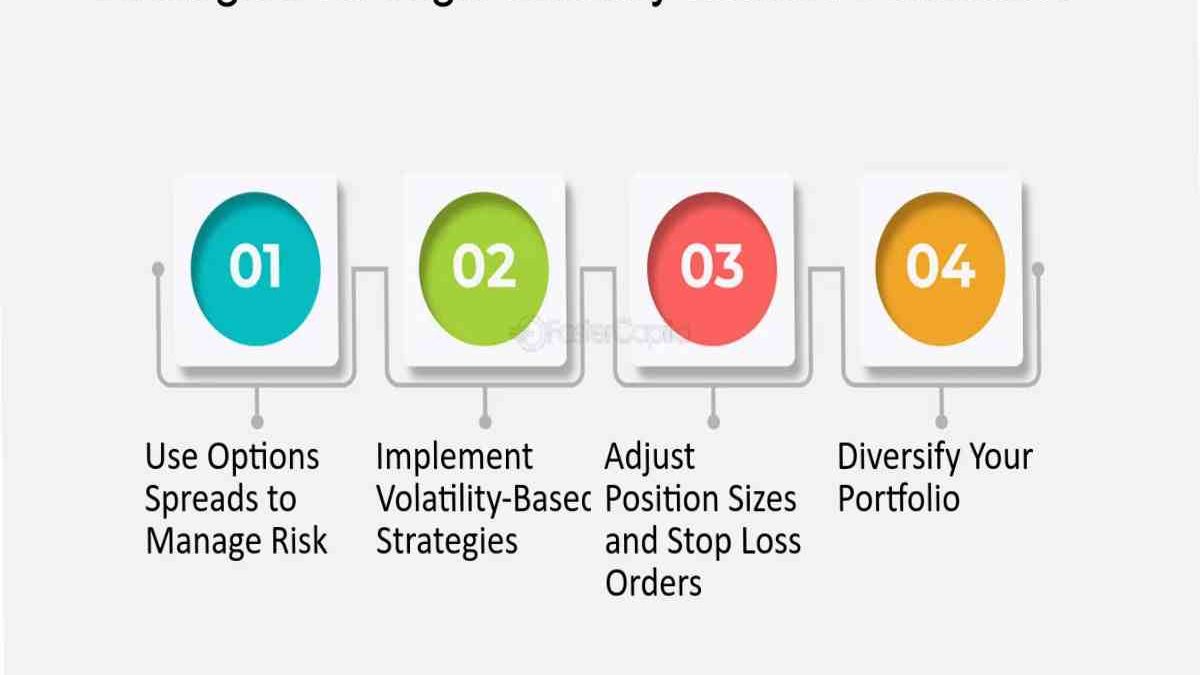How To Trade High-Volatility Markets – In statistical relations, volatility is the standard deviation of a market or security’s annualized returns over a given period – essentially, the rate at which its price increases or decreases. If the price alters rapidly in a short period, hitting new highs and lows, it is said to have high volatility.
The trader needs to gain profits from the strategies, and then he needs volatility to be high enough to shelter the strategy’s cost, which consists of payments paid for the call and put choices. The trader needs to have volatility to reach a price of more than $43.18 or less than $36.82.
Table of Contents
How Traders Can Take Benefit of High Volatile Markets
You can learn to achieve volatility markets for your benefit through a healthy—organized tactic while helping you minimize risks. Here are four steps to consider.
1. Explain your Objectives and Strengthen your Defenses
Before trade in high-volatility markets, be sure you are psychologically and tactically prepared to manage the increased risks. That means:
- You’re relaxed trading when volatility is high.
- You identify the potential for substantial loss of capital.
Two critical thoughts are position size and stop order assignment. Stop orders can help guard an unrealized gain or limit potential losses in a current situation by allowing you to set price triggers for stock sales. Through volatile markets, some dealers place smaller trades—meaning they commit less capital per trade and put their stop prices further from the current market.
2. Focus on trending stocks
Market volatility doesn’t necessarily erase trends. Firm stocks may continue to move in a specific direction—albeit with a potentially higher risk grade. For a buyer, the key is finding a stock trending higher at a steady pace but hasn’t yet rocketed upward. The goal is to get in before a price acceleration, not after.
Similarly, a short seller trading in a volatile market should look for a routine that’s been declining but hasn’t yet experienced a collapse or “waterfall” decay.
3. Watch for breakouts from alliances
Traders frequently try to “buy the breakout”— waiting for a stock to move through an identifiable support and resistance range. Provision is the price level where downward trends weaken as buying pressure overwhelms selling pressure. Resistance is often were upward trends start to fizzle as selling pressure overcomes buying pressure.
The breakout trader does nothing if the stock remains within that range. However, if the value breaks through the resistance level, the trader will look to buy immediately, hoping that the escape signals the beginning of a new constant move upward.
4. Consider taking some profits
In volatile markets, profits can unexpectedly vanish and turn into losses, so consider ways to lock in more gains when possible. One approach would be to lower the profit goal for parts of your locations. Or, if your stock is affecting sharply higher, consider selling a portion of your situation while letting the remainder ride to capture any further gains.
How to Express a Trading Strategy for Volatile Markets?
By asking somebody about their trading strategy in volatile markets, their immediate response will be to point out the India VIX that has been consistently falling over the last seven months. The volatility in Indian and global markets has been on a clear downtrend. The volatility Index (VIX) is also known as the Fear Index and captures the extent of fear in the market.
1. In a long-term bull marketplace, cash is king in volatile times.
Presumptuously that the Indian market is amid a prolonged uptrend. The volatility should be an opportunity to add to your positions in quality stocks. The challenge is how you keep your money invested in near-money assets or at least in less volatile sectors. One of the biggest contests in a sudden market alteration is not having sufficient liquidity at your disposal to capitalize on the opportunities that a penalty will give you.
2. Keep investing regularly; that is safer and simpler
If you do not want to become into the nonsense of low and high P/E ratios, the best way is to focus on regular and periodic investing. You can call it a SIP or any other name, but the moral of the story is that a phased method works best in a volatile scenario. For instance, between 2007 and 2017; the index would have barely given a return of 4-5% annualized in complete compounded terms
3. If you are a trader, stick to your trading strategy and your risk tolerance
The most significant rule for traders in volatile markets is to stick to the trading strategy. Volatile markets are not the period to take on more danger but less danger. Remember, the chances of striking a stop loss are much higher in volatile markets; hence, you need to trade with stricter stop losses and lower risk tolerance.
4. Conserving your capital is the top priority
Confirm that your losses do not wipe away too much of your money, especially if you are a trader. Typically, amid a long-term uptrend in the markets, volatility does not last for too long. However, if you misplace too much capital, that may control your trading volume once normalcy returns to the markets.
Conclusion
Hence, in trade, high-volatility markets is a measure of how prices or returns get circulated over time for a particular asset or financial product. It is a crucial metric because volatility creates profit potential. However, volatility trading can also make losses if traders do not learn the appropriate information and strategies. The Indian marketplaces are likely to get into a retro of volatility. But such low stages of volatility inspire high risk-taking, making markets volatile. It is best to prepare a plan to handle the market volatility!

